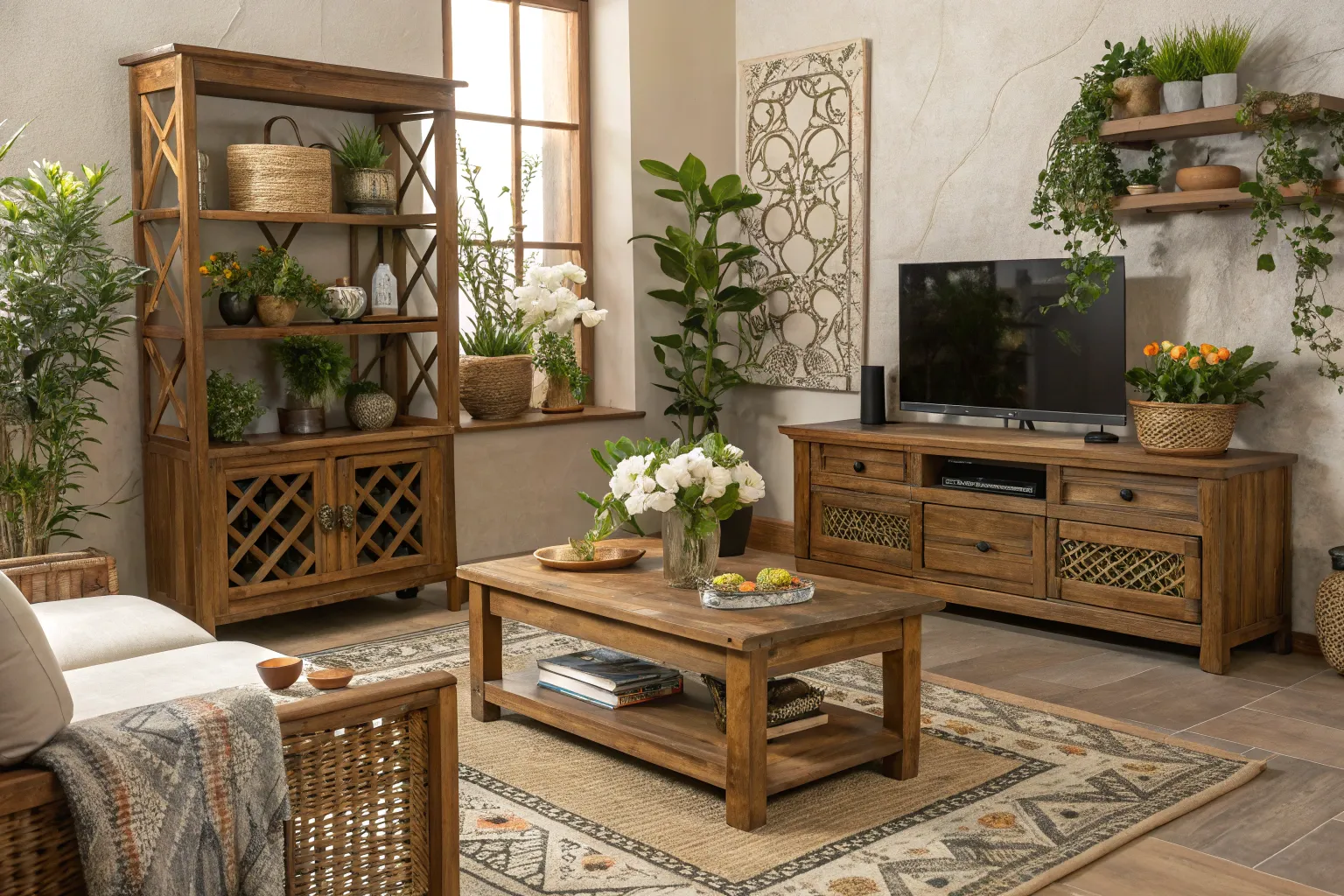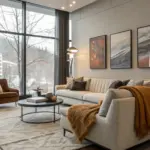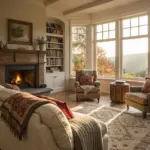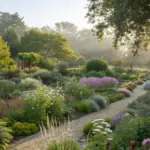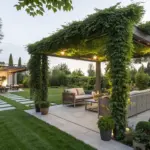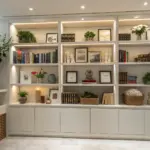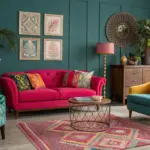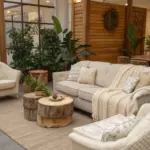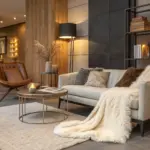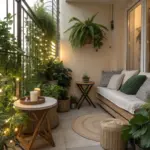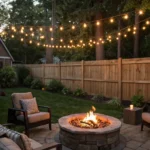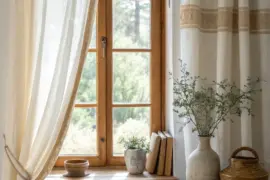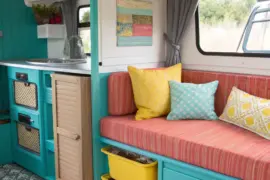Creating a home that breathes with the natural world isn’t just an aesthetic choice—it’s a return to our roots that enhances both our well-being and environmental stewardship. I’ve found that nature-inspired design offers the most profound and lasting transformation for any living space.
The Foundation: Understanding Natural Design Principles
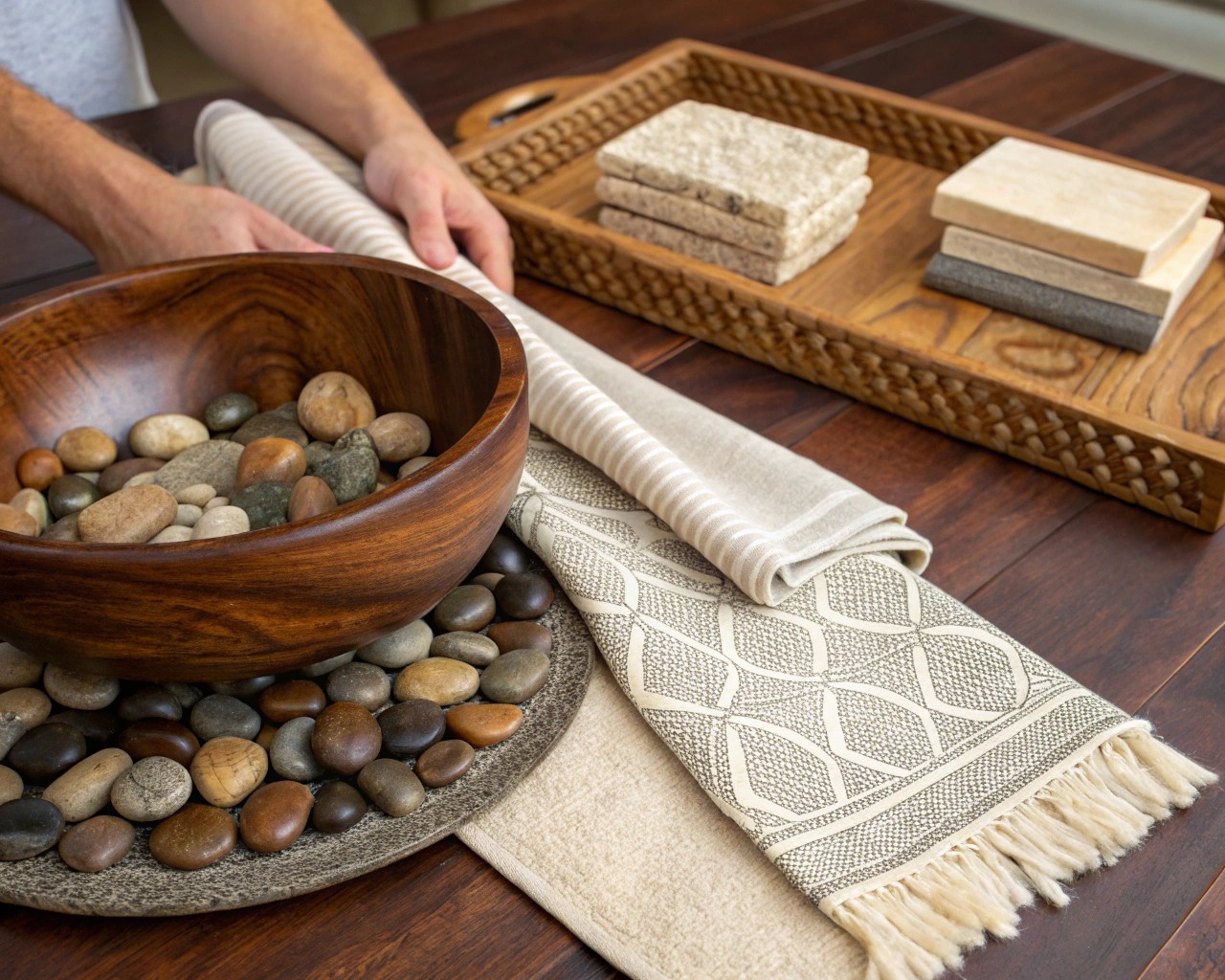
Biophilic design, rooted in our innate connection to nature, extends far beyond simply adding houseplants. The principles guide us toward creating environments that support wellness through visual connections to nature, natural materials, patterns found in the outdoors, and sensory engagement with organic elements.
Natural materials form the cornerstone of this approach. When we incorporate wood, stone, water, and organic textiles, we create tactile connections to nature that ground our spaces in authenticity. These materials don’t just look beautiful—they actively contribute to improved air quality, acoustic comfort, and emotional well-being.
Material Selection for Lasting Impact
Wood and Plant-Based Materials
Reclaimed wood brings both sustainability and character to interiors. Each piece carries history while reducing deforestation and energy consumption compared to new lumber production. I recommend focusing on locally-sourced options when possible, as they minimize transportation carbon footprint while supporting regional economies.
Bamboo emerges as an exceptional choice for its rapid renewability and versatility. Its natural antibacterial properties and moisture resistance make it suitable for various applications, from flooring to accessories. For maintenance, bamboo requires occasional oiling with mineral oil or eco-friendly wood treatments to maintain flexibility and prevent cracking.
Natural Stone Applications
Natural stone materials—granite, quartzite, marble, and limestone—provide durability while connecting us to geological time scales. Granite and quartzite offer exceptional heat resistance for kitchen applications, while marble brings elegance to bathrooms despite requiring more careful maintenance.
Stone requires specific care protocols based on type. Granite needs sealing every 1-3 years, while marble demands sealing every 6-12 months and pH-neutral cleaners to prevent etching from acidic substances. A simple water drop test reveals when resealing is necessary—if water darkens the stone surface, it’s time for fresh sealant.
Living Elements: Plants as Natural Air Purifiers
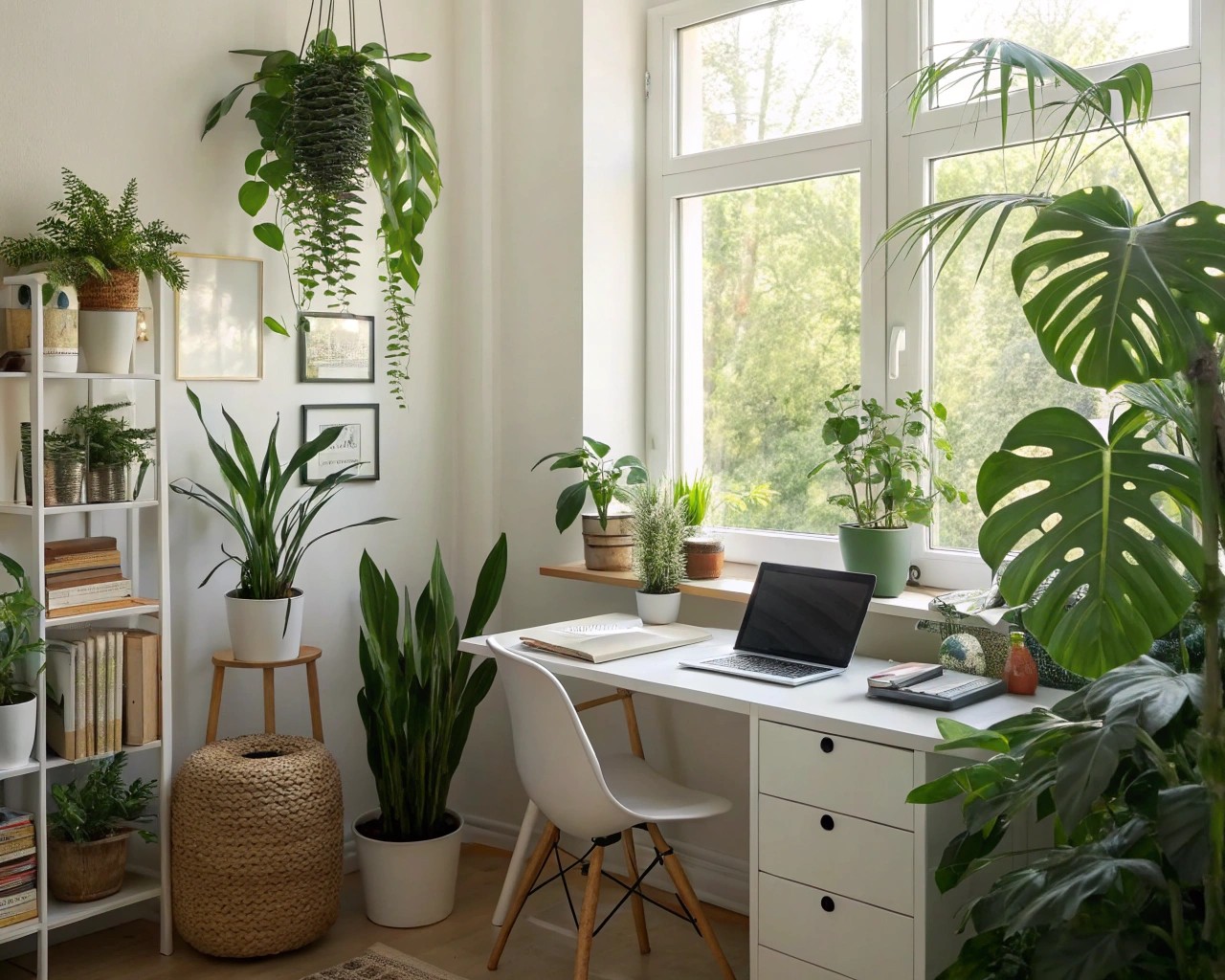
Indoor plants function as natural air filtration systems while providing psychological benefits. NASA’s landmark 1989 study identified specific plants capable of removing volatile organic compounds (VOCs) including formaldehyde, benzene, and trichloroethylene from indoor air.
High-Performance Air-Purifying Plants
| Plant Species | Primary Benefits | Maintenance Level |
|---|---|---|
| Snake Plant (Sansevieria) | Releases oxygen at night, removes formaldehyde | Minimal watering |
| Spider Plant | Removes carbon monoxide, pet-safe | Moderate care |
| Peace Lily | Elegant blooms, thrives in low light | Weekly watering |
| Aloe Vera | Air purification + medicinal properties | Drought-tolerant |
| Areca Palm | Natural humidifier for large spaces | Regular watering |
The most effective approach involves layering different plant types throughout living spaces. Research indicates that while you’d need approximately 680 plants to match commercial air purifiers, even modest plant collections provide measurable air quality improvements and significant psychological benefits.
Water Features for Acoustic and Visual Wellness
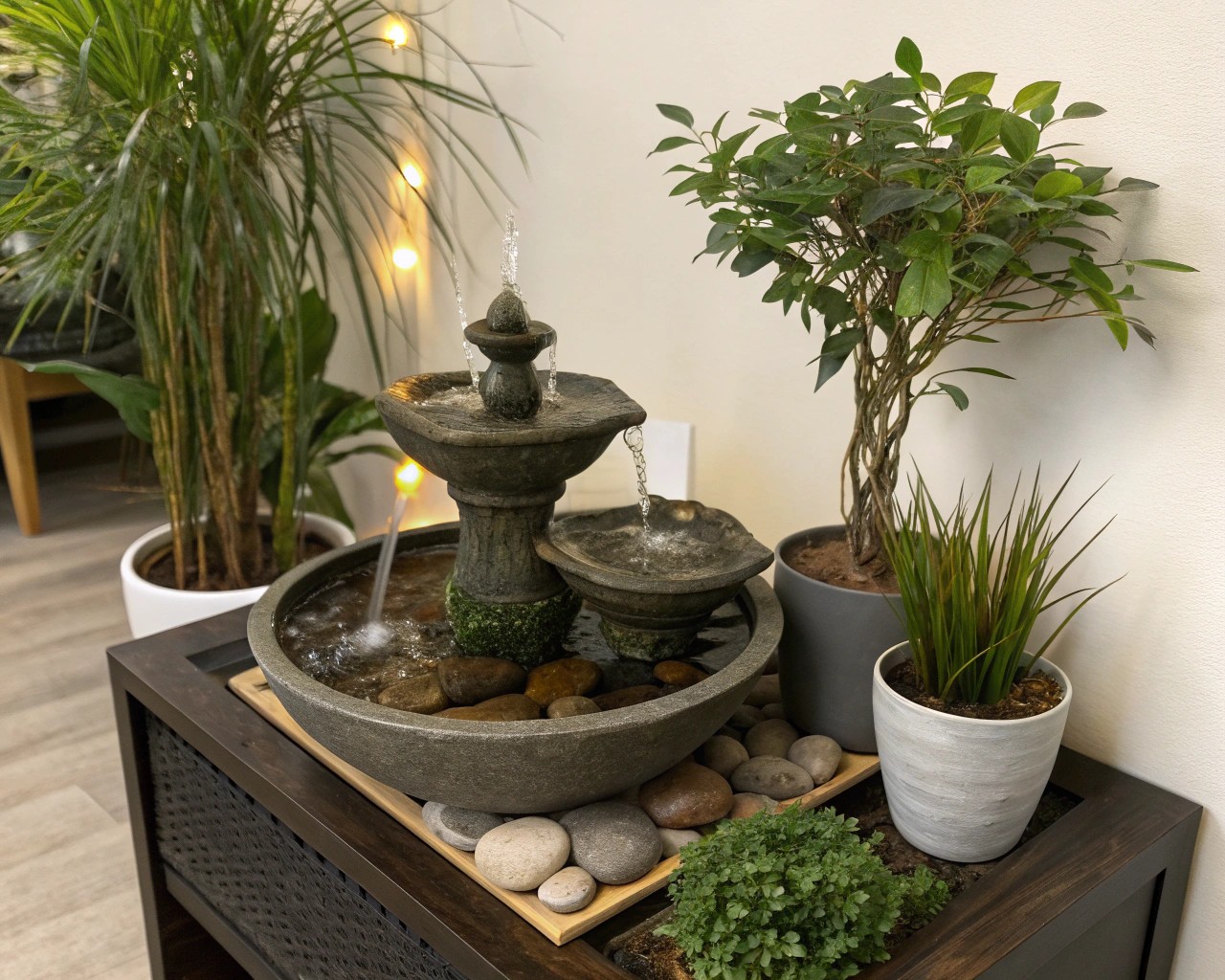
Water elements create powerful biophilic connections through both sound and movement. The acoustic properties of flowing water can mask urban noise while providing natural soundscapes that reduce stress hormones.
Scalable Water Feature Options
Small-Scale Solutions
– Tabletop fountains for desks and side tables
– Wall-mounted water panels for vertical spaces
– Indoor herb gardens with integrated water cycling
Statement Installations
– Living walls combined with trickling water elements
– Reflective ponds for meditation spaces
– Cascading fountains as room dividers
Water features require regular maintenance including filtration systems and beneficial bacteria to prevent algae growth. Position them near natural light sources when possible to support any aquatic plants while avoiding direct sunlight that accelerates algae formation.
Natural Lighting Design for Circadian Health
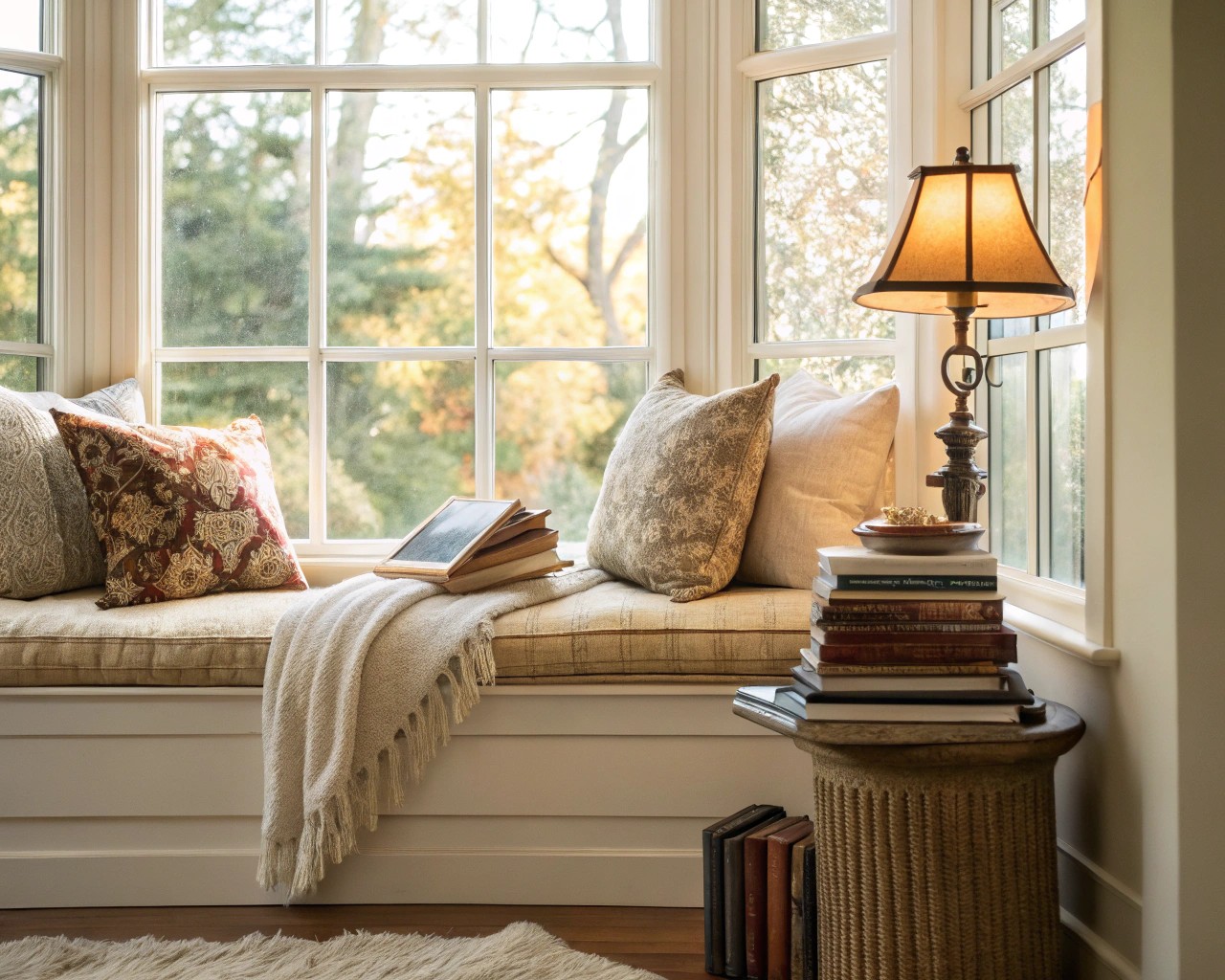
Natural light serves as our primary circadian rhythm regulator, directly impacting mood, energy levels, and sleep quality. Maximizing daylight penetration throughout homes reduces dependence on artificial lighting while supporting physiological well-being.
Daylighting Strategies
Strategic window placement and sizing can transform interior environments. Consider seasonal sun angles when planning renovations—south-facing windows provide consistent daylight year-round, while east-facing openings offer energizing morning light. Skylights and clerestory windows bring illumination to interior spaces without compromising privacy.
Light-colored surfaces and reflective materials help distribute natural illumination deeper into rooms. Polished stone surfaces, light-colored wood finishes, and strategically placed mirrors amplify available daylight while maintaining the natural aesthetic.
For artificial lighting, circadian-friendly systems that shift color temperature throughout the day support healthy sleep cycles. Warm, dim lighting in evening hours signals melatonin production, while cooler, brighter light during daytime maintains alertness.
Natural Color Palettes and Seasonal Adaptation
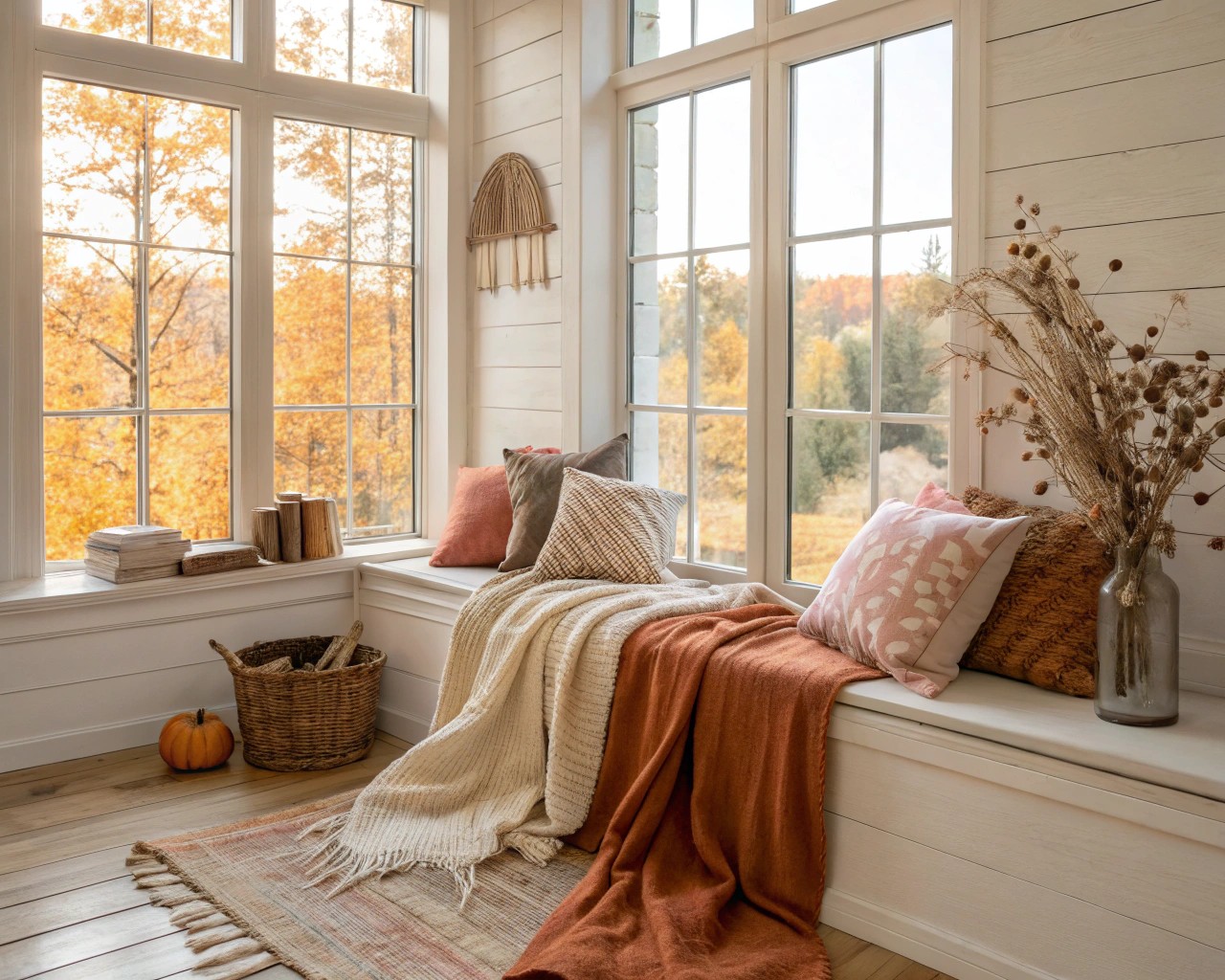
Earth-tone color schemes create psychologically grounding environments that connect us to natural landscapes. These palettes—featuring sage greens, clay terracotta, warm ochre, and stone greys—provide timeless foundations that adapt across seasons and trends.
Foundational Earth Tone Combinations
- Sage, Clay & Ivory: Creates serene, organic atmospheres with modern elegance
- Forest Brown, Black & Olive: Brings outdoor energy indoors with sophisticated depth
- Soft Coral, French Blue & Brown: Balances warm and cool tones for year-round comfort
Natural pigments in these colors contain brown undertones that create the “cocooning effect” associated with comfort and safety. Layer varied textures—leather, rattan, jute, linen, and natural stone—to add visual depth while maintaining the organic aesthetic.
Seasonal Natural Decor Transitions
Rather than relying on manufactured seasonal decorations, natural elements provide sustainable year-round variety:
Spring Refresh
– Fresh flowering branches in simple glass vessels
– New growth herbs for kitchen windowsills
– Light linen textiles replacing heavy winter fabrics
Summer Abundance
– Cut garden flowers in locally-made ceramic vases
– Natural fiber rugs for increased airflow
– Seasonal fruits as temporary centerpieces
Autumn Harvest
– Foraged branches, pinecones, and dried grasses
– Pumpkins and gourds as sculptural elements
– Warm wool throws in natural undyed tones
Winter Simplicity
– Evergreen boughs with minimal intervention
– Dried seed pods and winter berries
– Increased candlelight using beeswax candles
DIY Projects Using Found Natural Materials
Creating decor from foraged and locally-sourced materials reduces costs while ensuring uniqueness. These projects connect us directly with seasonal cycles and local ecosystems.
Simple Natural Craft Projects
Seasonal Garlands
Combine evergreen branches with dried orange slices, threaded on natural twine. This technique works year-round with different materials—spring pussy willows, summer wildflowers, autumn seed pods.
Botanical Wall Art
Press leaves, flowers, or interesting bark textures between glass and natural wood frames. Rotate displays seasonally to reflect changing outdoor conditions.
Natural Centerpieces
Arrange foraged branches in large glass vessels, adding seasonal elements like stones, shells, or dried flowers. These evolving displays change character as natural materials age and weather.
Maintenance Considerations for Natural Materials
Different natural materials require specific care approaches to maintain longevity and appearance:
Wood Care Protocol
– Regular dusting with clean, dry cloths
– Periodic oiling with food-safe mineral oil or specialized wood treatments
– Protection from direct heat sources and excessive moisture
– Immediate cleanup of spills to prevent staining
Cane and Rattan Maintenance
– Weekly gentle dusting to prevent mildew buildup
– Occasional wiping with slightly damp cloth
– Keep away from extreme heat and low humidity to prevent brittleness
– Light coating of furniture wax annually for flexibility
Natural Textile Care
– Linen and organic cotton require gentle washing in cool water
– Air drying preserves fiber integrity and reduces energy consumption
– Iron while slightly damp for best results
– Store with lavender sachets for natural moth deterrence
Creating Integrated Natural Systems
The most successful natural interiors function as integrated ecosystems rather than collections of individual elements. Consider how materials, plants, lighting, and water features interact to create holistic environments.
Position air-purifying plants near seating areas where people spend extended time. Combine water features with nearby plants to create humidity microclimates that benefit both occupants and vegetation. Use natural stone surfaces near windows to capture and reflect daylight while providing thermal mass for temperature stability.
Natural materials often improve with age and use, developing patinas and character that synthetic materials cannot replicate. This evolution becomes part of the home’s story, creating deeper connections between occupants and their environment.
The investment in natural materials and biophilic design elements pays dividends through improved air quality, reduced stress levels, enhanced creativity, and stronger connections to seasonal rhythms. These benefits extend beyond individual well-being to support broader environmental stewardship through sustainable material choices and reduced reliance on manufactured products.
By thoughtfully integrating these natural elements, we create homes that serve as retreats from increasingly digital and urban lifestyles while supporting both personal wellness and ecological responsibility.

